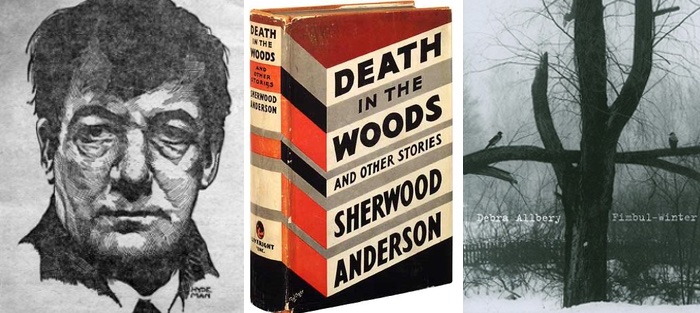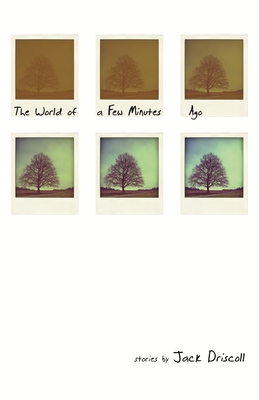Editor’s Note: For the first several months of 2022, we’ll be celebrating some of our favorite work from the last fourteen years in a series of “From the Archives” posts.
In today’s feature, poet Debra Allbery examines the influence of Sherwood Anderson on her writing, and on her understanding of her own history and place. This essay was originally published on December 14, 2011.
Somewhere in my files is an abandoned poem called “The Three Stories My Mother Told Me about Herself.” My mother not being a storyteller by nature, nor one given to confidences, these were cautionary tales—lessons learned, now presented for my benefit. The first, on the wisdom of doing what you are told, was about the time she was supposed to wait after the picture show for her father to come walk her the three or four miles back to their rural southern Ohio home, because there were gypsies camped in the woods. But my mother, displaying a disobedience, or, at the very least, a daring I never witnessed in her as an adult, struck out boldly on her own. Her father, on his way to meet her, saw his daughter coming, hid in the trees and then jumped out to frighten her—to startle her, she said, back into her good common sense.
The second story, on being grateful for what you have, concerned the December in the late 1930s when my mother and her six siblings got off the school bus to find that their farmhouse had burned to the ground. My grandmother stood there by the smoldering foundation holding the only things she managed to grab as she ran out—the family Bible and two dresses on hangers. Everything else was lost, including their savings; in those early post-Depression years, my grandfather did not believe in banks. The neighboring families took them in by twos and threes that winter and (she always presented this as a fitting conclusion) gave them gifts of new Christmas ornaments.
The third wasn’t really a story but, rather, ingredients toward one, which I combined and recombined—a collection of mementos from my mother’s high school years. Her senior yearbook, with its twenty graduates—all those smooth, expectant faces gazing out and up toward a future that even in my childhood, of course, had long since settled into circumscribed lives centered around coal mines and factories. My mother’s radiant photograph captioned in iambic tetrameter: “She leaves a string of broken hearts.” And all the little mementos and keepsakes she kept in a small cedar jewelry box, its neat brass clasp opening with a whiff of past-preserved: twin black Scottie magnets which seemed ever to repel each other, a broken gold watch whose pinching wristband seemed itself a reproach to my encroachment.
What I was drawn to in these stories were all the wrong things. The dark pressured suspense of gypsies in the woods, molten mounds of gold and silver in the snow and charred timbers. The perplexing symbols of those two dresses or Christmas ornaments decorating loss (for years I rehearsed what I’d rescue if our house caught on fire). Souvenirs as synecdoche. Behind it all, the reminder of the utter unknowability of someone I was with every day, the vastness of the absences in a family’s past. The primary lesson, I suppose, was what reticence can teach, or at least coax forth—how we construct another’s life to the extent we can from remnants and fragments, much as I used to try to piece into a whole understanding my mother’s countless letter drafts to her own mother from the scraps in her wastebasket, revised until she’d written out anything that might cause any worry, revised until they said almost nothing at all. Torn in half, torn in half again. We are all fine here, she’d write in her tidy run-ons, the weather is unusually warm. Or sometimes just her full name, written over and over down the page. If, as Eudora Welty learned in her own childhood, one secret is often offered up in place of another, in my own family—which was loving and secure but also securely contained, each of us keeping our own counsel—I was another degree removed from those secrets, trying to assemble a story from whatever images and objects were offered or found or forgotten.
∞
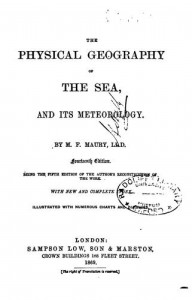 My husband, Matthew Fontaine Maury Gildea, grew up in Charleston, South Carolina, because his parents drove there from Charlottesville for their honeymoon and decided to stay. Both my husband’s parents were Virginians, centuries back on his mother’s side. He was descended from French Huguenots, the Fontaines and the Maurys, who had come to Virginia in early 1700s. We have John Fontaine’s memoir, written between 1710 and 1719, on our shelves, there are plaques honoring his forebears on the walls of the Huguenot church in Charleston, and outside Charlottesville you can still see the marker on the site of the boarding school run by Fontaine’s grandson, the Reverend James Maury, where the promising and privileged boys he taught included Thomas Jefferson, James Monroe, and James Madison. History weights my husband’s very name, the first Matthew Fontaine Maury—Reverend Maury’s grandson— being “the Pathfinder of the Seas,” the author of The Physical Geography of the Sea, the first American to systematically chart wind and ocean currents. In my own family, I knew the names of my great-grandparents—and that’s the edge of my map; anything prior to that becomes a dissolve, a blank page, terra incognita. When my mother told me the fire story, I longed to look into that rescued Bible; I felt sure it was the repository of what would otherwise be lost, and perhaps now indeed has been.
My husband, Matthew Fontaine Maury Gildea, grew up in Charleston, South Carolina, because his parents drove there from Charlottesville for their honeymoon and decided to stay. Both my husband’s parents were Virginians, centuries back on his mother’s side. He was descended from French Huguenots, the Fontaines and the Maurys, who had come to Virginia in early 1700s. We have John Fontaine’s memoir, written between 1710 and 1719, on our shelves, there are plaques honoring his forebears on the walls of the Huguenot church in Charleston, and outside Charlottesville you can still see the marker on the site of the boarding school run by Fontaine’s grandson, the Reverend James Maury, where the promising and privileged boys he taught included Thomas Jefferson, James Monroe, and James Madison. History weights my husband’s very name, the first Matthew Fontaine Maury—Reverend Maury’s grandson— being “the Pathfinder of the Seas,” the author of The Physical Geography of the Sea, the first American to systematically chart wind and ocean currents. In my own family, I knew the names of my great-grandparents—and that’s the edge of my map; anything prior to that becomes a dissolve, a blank page, terra incognita. When my mother told me the fire story, I longed to look into that rescued Bible; I felt sure it was the repository of what would otherwise be lost, and perhaps now indeed has been.
∞
I was born in Hocking County, Ohio, where both of my parents had been born and raised, my mother in New Straitsville and my father in Enterprise, but we lived during my early childhood in a larger town called Logan. My memory of southern Ohio has a noirish pall over it, all semi-darkened rooms and parlor silence; outside, a perpetual light rain scented with coal, cinders always crunching underfoot. When I was seven, the auto-parts factory where my father was working closed down, so he and his fellow workers drove all around Ohio together looking for work. My father was eventually hired at the Ford plant in Sandusky, by Lake Erie, and so we moved four hours north to our new home in Clyde, about an hour south of Toledo. The distance from family was significant for my parents; we returned to Logan often on weekend trips. I recall that for a while, when we’d drive south to visit my grandparents, I’d feel excited, alert, as, just past Columbus, we crossed the terminal moraine—the line where the glaciers had stopped and the land shifted dramatically from dead flat to rolling hills. Over time that too receded, and instead of feeling I was returning to the place I was from, I began to feel that I was from nowhere at all. And that didn’t trouble me; it kept every road open.
∞
So it was that I grew up in Sherwood Anderson’s hometown, Clyde, Ohio, which had served as the model for his seminal collection of linked stories, Winesburg, Ohio, published in 1919. In the front matter of the collection, there’s a map which is still quite true to the town’s layout, if skewed in scale, a kind of through-the-looking-glass glimpse. I used to turn just to that map, that visible connection with a place I walked every day—Main Street and the alley behind, Buckeye Street (eventually my family’s own address), Waterworks Pond—sensing some kind of larger resonance just by its transmutation, and often just transparent translation, into tales. Winesburg’s “Hern’s Grocery” was a thinly-disguised Hurd’s, the small grocery on Main Street where my mother sent me in the summertime to buy bread and milk. Herman Hurd had been Anderson’s boyhood friend; as Herman died in 1963, before we moved north, the shopkeeper I remember must have been his brother, Hiram. Herman’s son Thaddeus, an architect, became the town historian, the founder of the Clyde Heritage League, and a highly respected if, to me, rather forbidding figure (my memory substitutes photos of Ezra Pound).
In many ways, Clyde in the 1960s still resembled the town that Anderson had known (he left it in 1897), a place anchored by a stubborn stasis and insularity which was both comforting and exasperating. The Presbyterian Church’s bell tower was screened in by then (no longer having, if it ever did, the stained glass window Reverend Hartman broke in “The Strength of God”). But the town still had its hitching rails in place along Main Street when I was little, many of the streets were brick (I loved the cobble-cobble of tires passing over them), the dime store its original pressed-tin ceiling. And there was a long-defunct grain elevator in the middle of town, right by the railroad tracks that people had once believed would transform Clyde into a Cleveland or a Columbus. [Image courtesy the Sherwood Anderson Foundation.]
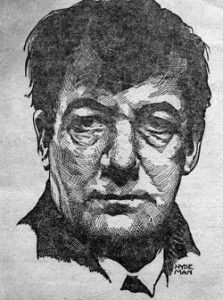
Image Courtesy of the Sherwood Anderson Foundation
Instead, it became, as the city-limits signs still proclaim, America’s famous small town. If Clyde in itself wasn’t very distinctive—a single block of downtown with three stoplights, the fathers all working at Whirlpool or Ford or GM, the mothers at home endlessly making their ends meet—at least it could take pride in imagining itself as representative or definitive, a model, an emblem. Not that the townspeople generally were aware of Anderson’s book during the time I was growing up there, or the acute depiction of their town in it, its sympathetic but clear-eyed portrait of largely inarticulate, isolated lives marked by stunted ambitions, limited resources, thwarted desires. Anderson, in later years, recalled the reception of the book as hostile: “The people of the actual Winesburg protested. They declared the book immoral….” He writes of New Englanders burning copies outside of their town library, just as I’ve heard was done in 1919 in Clyde. Walter Rideout makes a persuasive case for Anderson’s revisionist account as a defensive reaction “to the erosion of the fame Winesburg had helped to bring him”; the reviews, as well as the letters he received around the time of publication, were actually predominantly positive. But what I knew firsthand in the 60s and 70s was that “Winesburg” was largely unchanged, and that Anderson, in his hometown, was unknown.
Anderson himself wasn’t a presence for me until I was twelve or so. My father was then, and remains, a champion reader—voracious and speedy, and not so much indiscriminate in his tastes as democratic. He was a regular patron at the library, where he favored hefty historical novels (I remember him dispatching Herman Wouk or R. F. Delderfield doorstops in no time), but he also would buy paperbacks by the pound in the nearby town of Fremont—John MacDonald, Ross MacDonald, Dashiell Hammett, Larry McMurtry, Elmore Leonard—and would read through a grocery bag of them each week at the Ford plant where he worked a brass tumbler at twenty-minute intervals. I had settled on writing as my calling by the time I was eleven, and it was around that time that he bought a college literature text at a garage sale for me for a dime. Red cloth binding and about four inches thick, it included some Anderson’s stories—“I’m a Fool,” “I Want to Know Why,” and “Death in the Woods.” My father pointed out Anderson’s name in the table of contents and said, “This man grew up in Clyde.” It’s difficult to describe the enormity of the impact that had on me then, and thereafter—the possibility it fostered in me, the nascent sense of kinship. “I’m a Fool” and “I Want to Know Why” left me with an empty and unsettled sadness, but “Death in the Woods” felt like a folktale. I was as drawn toward the narrator’s need to tell the story as to the story itself. It would become a kind of touchstone for years; returning to it and reentering it, understanding more of what it had to offer, I began to see it as a barometer of my own growth as a writer, and a measure of how much farther I still had to go.
∞
In the Clyde Public Library, an oil portrait of Sherwood Anderson, a broadstroked rendering in umber and ochre based on a 1923 Stieglitz photograph, hangs over the fireplace in its rotunda reading room. I spent quite a bit of time reading opposite that painting while I was growing up. And then in summers when I was in college, I was employed at the library as a page. W.S. Merwin has written of those “angels” which all burgeoning writers need to encounter along the way, the teachers and kindly adults who take an interest at critical moments, who tend a passion with their direction and respect. For me, that angel was Marjorie Buck, the head librarian during my school years. She spoke softly and always very precisely, and had both a librarian’s thin-lipped primness as well as a generous and listening deference. She steered me early on from the YA books toward Dickens, Hardy, George Eliot, Jane Austen, and to Frost and T.S. Eliot; she allowed me to borrow books that didn’t circulate, including the full four feet of the Harvard Classics and a beautiful gilt-edged, leather-bound set of Conrad that was kept in a locked cabinet in the basement. In a town full of recreational readers checking out the same handful of mysteries and bestsellers over and over, she would quote Shirley Jackson, P. G. Wodehouse, Evelyn Waugh. She confided to me when I started working there that for years she had kept the subscription to Poetry magazine active solely for me—no one else had ever checked it out.
Marjorie was also unlike most women in town in that she had gone to college, and, as her husband was from Germany, had traveled widely in Europe. She told me a story once that I think Anderson would have enjoyed: at a meeting of the Clyde Garden Club everyone was asked to write down on a slip of paper the place where they would “most like to live in the entire world.” Marjorie said that was a difficult decision for her (Paris? Florence?), but she ultimately, loyally, decided on Stuttgart, where her husband had grown up. She then collected the slips of paper and read them aloud, and was startled to see that she was the only one in the room who hadn’t written down Clyde, Ohio. “Imagine,” she said to me, her smile both gently sympathetic and genuinely baffled. Imagine.
∞
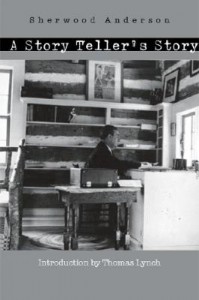 Anderson’s A Story Teller’s Story, published in 1924, was his first of three overtly autobiographical works; he also published Tar: A Midwest Childhood, a semi-fictional account, in 1926, and his Memoirs. Really, all of Anderson’s autobiographical writings could come under the heading of “semi-fictional”—Anderson was by nature an embellisher, a teller of tales—he revised fact or fiction by repeating it aloud, retooling the narrative toward better effect with each new listener. But the basic players in his own story were these: the hardworking, gaunt, self-sacrificing mother who dies young; the ne’er-do-well footloose yarn-spinner musician father; the meager, hardscrabble childhood; the romantic, dreamy, misfit siblings; and young industrious Sherwood—“Jobby,” the go-getter whose own silver-tongued talent leads to success in advertising and business and a profitable marriage, but mires him in an empty life which he then dramatically abandons for art. His exit from the paint company he owned near Elyria, Ohio in November, 1912 was one such moment that grew in the retelling—the dramatic departure from the business world, the refusal to be a “mere peddler of words,” as Kate Swift will later warn George Willard in Winesburg from becoming.
Anderson’s A Story Teller’s Story, published in 1924, was his first of three overtly autobiographical works; he also published Tar: A Midwest Childhood, a semi-fictional account, in 1926, and his Memoirs. Really, all of Anderson’s autobiographical writings could come under the heading of “semi-fictional”—Anderson was by nature an embellisher, a teller of tales—he revised fact or fiction by repeating it aloud, retooling the narrative toward better effect with each new listener. But the basic players in his own story were these: the hardworking, gaunt, self-sacrificing mother who dies young; the ne’er-do-well footloose yarn-spinner musician father; the meager, hardscrabble childhood; the romantic, dreamy, misfit siblings; and young industrious Sherwood—“Jobby,” the go-getter whose own silver-tongued talent leads to success in advertising and business and a profitable marriage, but mires him in an empty life which he then dramatically abandons for art. His exit from the paint company he owned near Elyria, Ohio in November, 1912 was one such moment that grew in the retelling—the dramatic departure from the business world, the refusal to be a “mere peddler of words,” as Kate Swift will later warn George Willard in Winesburg from becoming.
The event does have firm basis in fact. Anderson had already written his apprentice novels Windy McPherson’s Son and Marching Men, and the stress of his strained marriage and family life, and immersion in work that felt dishonest to him were all increasingly taking their toll. He dictated a letter, then wrote a cryptic note to his wife saying, “There is a bridge over a river with some cross-ties before it. When I come to that I’ll be all right.” He walked out of the building, and turned up in Cleveland four days later. The story he made of this psychological crisis was that it marked his immediate departure for the writing life. Of course, it wasn’t that clean a break—it took about three more years for him to head to Chicago and fully embark on a writer’s life, and even then he had to return to advertising occasionally. But metaphorically, certainly, it was a division line, his own terminal moraine, a gesture that was more than telling. In recasting that gesture as a poem, I tried to imagine the missing days in that fugue state, while letting him tell his story the way he had parsed it out through his Winesburg characters. My own orienting insertion was my grandmother’s Logan farmhouse, whose roof had a great W N spelled out in slate shingles—the mark of its builder, William North, my father told me. I wondered as a child what person would ever dare leave so large a signature.
∞
What drew me from the start to Anderson’s fiction was his plain speech; his effort to honor, give name and voice to, unacknowledged lives; the poetry he recognized in the commonplace: “There was a kind of poetry I was seeking in my prose, word to be laid against word in just a certain way, a kind of word color, a march of words and sentences, the color to be squeezed out of simple words, simple sentence construction.” Anderson’s work derives from the oral storytelling tradition, but what made it distinctive, what makes it—at its best—riveting still, were its lyrical modernist undercurrents and its psychological acuities: the curtailed, halting, pulsing rhythms of speech and what those currents carry; what is revealed through what we suppress or what is generated between what we juxtapose—what simple words and their colors can convey and what rises out of language’s failure. (“It had the appearance of fumbling,” Faulkner wrote, “but actually it wasn’t. It was hunting, seeking.”) His voice was as familiar as a relative’s to me: those dovetailings of naivete and down-home turns of phrase and exaggeration’s swagger, laid over a solid foundation of humility, compassion, decency—in stories marked by the struggle between silence and expression, ineffectuality and control, desire and denial. His prose strives toward a purity—as Faulkner said, “The exactitude of purity, or the purity of exactitude, whatever you like”:
His was not the power and rush of Melville, who was his grandfather, nor the lusty humor for living of Twain, who was his father, he had nothing of the heavy-handed disregard for nuances of his older brother, Dreiser. His was that fumbling for exactitude, the exact word and phrase within the limited scope of a vocabulary controlled and even repressed by what was in him almost a fetish of simplicity, to milk them both dry, to seek always to penetrate to thought’s uttermost end.
For all these kinships I felt, I discovered early on that what I didn’t share with Anderson was a need to invent myself through story. My impulse rather was to seek out others’ stories in my own—an inclination toward essence rather than elaboration, toward metaphor more than description, suggestion rather than narration. Which is not to say that Anderson didn’t also incline toward poetry: he did publish three books of Whitmanesque verse. But Anderson, like Faulkner, wrote his best poetry within his prose. “It is a job for a poet”; “It needs the poet there,” he wrote in “Hands.” Such was the case throughout his fiction. His unsaids and untolds were what spoke to me most strongly, how a poet’s tools operated beneath those passive (“it needs”) gropings for “truths.”
∞
I’ve given this essay the title “A Story Teller’s Story,” and I’ve referred mostly to Winesburg, but the destination of the journey is “Death in the Woods,” the first story by Anderson that I read, and the one to which I’ve returned most often. It appeared initially in a magazine in 1916—so, written around the time he was writing the Winesburg stories—then was related again in Tar in 1926, and then was included in Death in the Woods and Other Stories, in 1933. It’s set quite clearly, given the placenames, in Clyde. The story, in first person, narrates the life of a woman named Mrs. Grimes, once a servant girl but now an old woman who lives on a farm with her abusive husband and son. On her way back from town where she’s gone to buy food for the men and the livestock, she freezes to death, and a pack of wild dogs make a kind of ritual circle around her body. The narrator lets us know then that he observed this death as a boy, with his brother. Tells how the brother related the story when they get home, of his dissatisfaction with the brother’s account. The story is his effort to do the story justice:
The scene in the forest had become for me, without my knowing it, the foundation for the real story I am now trying to tell. The fragments, you see, had to be picked up slowly, long afterwards.…
The whole thing, the story of the old woman’s death, was to me as I grew older like music heard from far off. The notes had to be picked up slowly one at a time. Something had to be understood.
It’s fascinating to compare this version with the one that appeared five years earlier, though Anderson continued to revise it, repeatedly, after its appearance in 1933. What he appends to the 1933 version is his sense of the inadequacy of the story he’s just told: “I am only explaining why I was dissatisfied then and have been ever since. I speak of that only that you may understand why I have been impelled to try to tell the simple story over again.” If that sense of distance between the story I need to tell and the story I’m able to tell called to me at the earliest stage of my apprenticeship, it does so no less now. The restless effort to honor a life by piecing together its facts and remnants (like torn letter drafts, isolated keepsakes) and sketching the boundaries of its mystery, the desire to give voice to that life, the recognition that what’s unknowable and elusive might be conjured in the effort—those were ambitions I recognized and admired.
Death in the Woods
The story is about the storyteller,
about getting the telling right.The narrator is recalling the winter
he and his brother, just boys, found a womanfrozen to death in the woods.
She’s been made old before her timeby a hard life, hard men. She’s beautiful
in death, of course. Her clothes worriedfrom her body by a pack of dogs
that have circled her dying, left an iced zeroaround her in the clearing. It’s that circle
in the story that always gives me solace,the drumbeat of that path, the dogs running
nose to tail. And the boy, now a man,can’t stop telling this story. He invents a life
for the woman in an effort toward honor,he erases it and starts again because
to be done with it is a disservice. The pointof the story is to keep her cold mystery,
keep that circle drawn around herhigher and higher, a glass wall, keep everyone
from getting any closer.(Section 4 of “In the Pines,” Fimbul-Winter, 74-75)
It’s the Anderson of “Death in the Woods” that feels most like my forebear, my kin—if Melville is Anderson’s grandfather, I’ve long felt that Anderson is mine. A print of that Stieglitz photograph, the one which was the basis of the painting presiding over the reading room in the Clyde Library, was the first picture I hung when I moved into my Warren Wilson College office. Anderson’s fiction, the landscape of his stories, is the place I come from—in the same way that I’d later feel I came, as well, from the worn, industrial landscapes and perspectives of the poems of James Wright, who said, “The spirit of place…isn’t simply image but presence…the genius of place.” And if place, as Welty says, is our source of inspiration and knowledge, if a writer’s honesty begins there, she also allows, “You can equally be true to an impression of place.” That impression, for me, has now been shaped by Iowa, Wisconsin, New Hampshire, Virginia, Michigan, Texas, and North Carolina, as well as Ohio, and it’s been informed over the years by so many other writers. If I came into writing feeling largely without history or place, writing became a means of discovering both; it also became, as it did for George Willard, a means of discovering a way out, the road ahead. Sherwood Anderson gave me a map.

